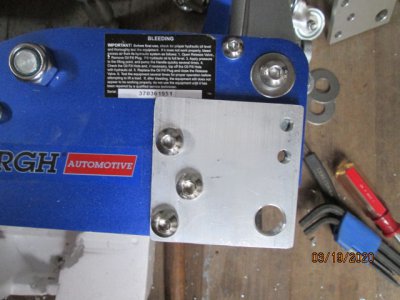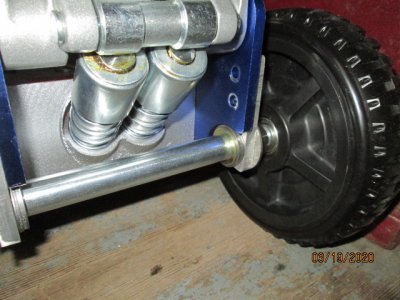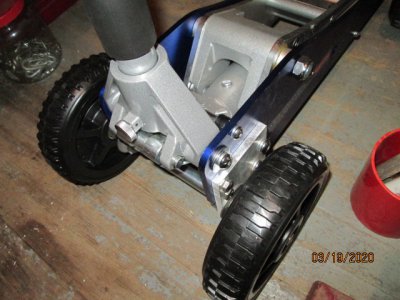- Joined
- May 18, 2021
- Messages
- 51
Addendum to my HF floor jack conversion - Just before I started the conversion I retired from working in a large metal fabrication shop. Bad timing but it worked out in the end. The only item that I had my former co-workers do for me was to cut the 3/8" aluminum flat stock to size. Other than that, using the Pro Eagle parts was pretty easy although expensive. I don't have a lathe (not yet but working on it) and had to use their already made axles. If you had a lathe, you could turn your own axles and that would cut some of the cost. Some have suggested that I could have used HF wheels but the Pro Eagle wheels are proven and I'm a firm believer in that safety is an arena where one shouldn't economize.
I've used the converted jack quite a bit over the past year and it works great. Pulling it over my gravel driveway is almost effortless unlike dragging my steel floor jack. That was almost impossible.
I removed the original handle because it was located poorly for balance and it interfered with the front wheels. The handles I used I found on Ebay. The original 8.8 hardware was replaced with longer 12.9 fasteners.
Pics during the conversion for the rear wheels.....


I've used the converted jack quite a bit over the past year and it works great. Pulling it over my gravel driveway is almost effortless unlike dragging my steel floor jack. That was almost impossible.
I removed the original handle because it was located poorly for balance and it interfered with the front wheels. The handles I used I found on Ebay. The original 8.8 hardware was replaced with longer 12.9 fasteners.
Pics during the conversion for the rear wheels.....





